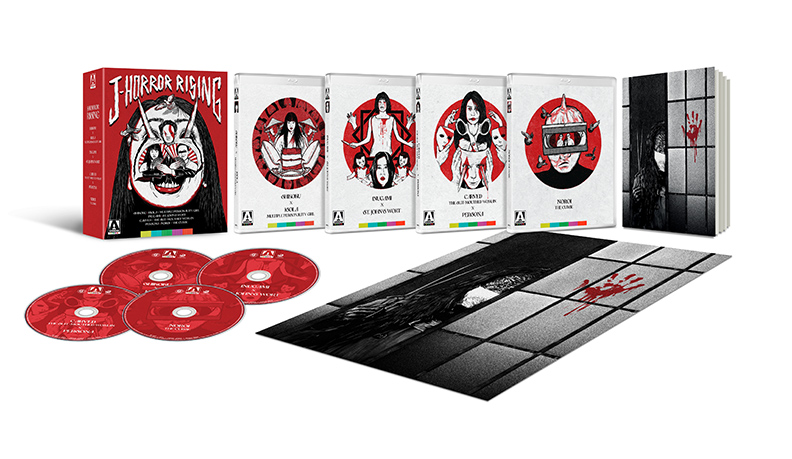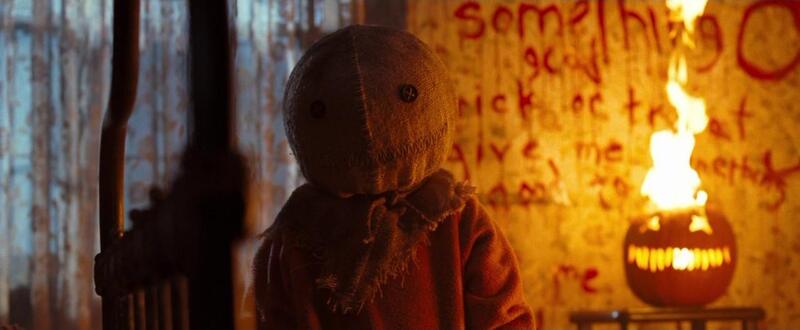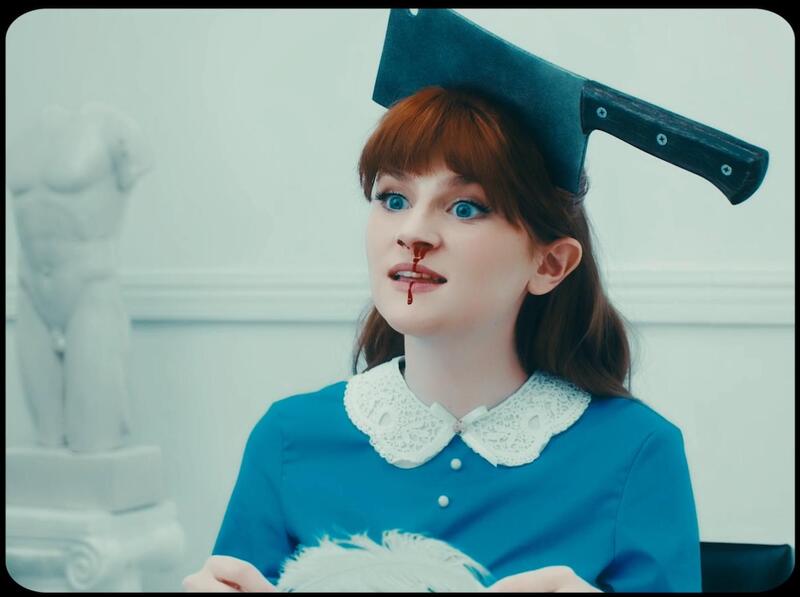
Tradition, Superstition, and Terror Unleashed
MOVIE REVIEW
J-Horror Rising [Limited Edition]
Shikoku –
Isola: Multiple Personality Girl (Isola: Tajuu jinkaku shôjo) –
Inugami –
St. John's Wort (Otogiriso) –
Carved: The Slit-Mouthed Woman (Kuchisake-onna) –
Persona (Kamen gakuen) –
Noroi: The Curse –
Genre: Horror, Thriller, Drama, Mystery, Romance, Sci-Fi, Fantasy
Year Released: 1999 / 2000 / 2001 / 2001 / 2007 / 2000 / 2005
Runtime: 1h 40m / 1h 34m / 1h 46m / 1h 25m / 1h 30m / 1h 30m / 1h 55m
Director(s): Shunichi Nagasaki / Toshiyuki Mizutani / Masato Harada / Ten Shimoyama / Kôji Shiraishi / Takashi Komatsu / Kôji Shiraishi
Writer(s): Masako Bando, Kunimi Manda, Takenori Sentô / Hiroshi Hatajima, Mugita Kinoshita, Yûsuke Kishi, Atsushi Kuwahara, Toshiyuki Mizutani / Masako Bando, Masato Harada / Goro Nakajima, Takenori Sentô, Shûkei Nagasaka / Naoyuki Yokota, Kôji Shiraishi / Hiroshi Hashimoto, Osamu Sôda / Kôji Shiraishi, Naoyuki Yokota
Cast: Yui Natsukawa, Michitaka Tsutsui, Chiaki Kuriyama / Yoshino Kimura, Yû Kurosawa, Ken Ishiguro / Yûki Amami, Atsuro Watabe, Eugene Harada / Megumi Okina, Youichirou Saitou, Koji Ohkura / Eriko Sato, Haruhiko Kato, Chiharu Kawai / Tatsuya Fujiwara, Maya Kurosu, Ikkei Watanabe / Jin Muraki, Tomono Kuga, Marika Matsumoto
Where To Watch: available October 29, 2024; pre-order your copy here: www.arrowvideo.com, www.mvdshop.com, or www.amazon.com
RAVING REVIEW: Arrow Video’s J-HORROR RISING collection boldly steps into the lesser-explored side of Japanese horror, delivering a blend of films that showcase the genre’s depth and chilling atmosphere. This set brings together seven films, each offering a unique perspective on fear, from supernatural folklore to psychological terror. While these aren’t the blockbuster names often associated with J-horror, the impact of their storytelling and visual intensity is no less significant.
One of the most impressive aspects of this collection is how the films have been remastered. Each title benefits from improved picture quality, highlighting its distinct, moody cinematography. The sharper visuals add to the eeriness and tension these films thrive on, highlighting every scene's subtle but crucial details. However, the range of unique features, including interviews and behind-the-scenes content, makes the set stand out, providing insight into these films' creative process. You can tell there was a passion and effort to capture the best possible elements that could be found for these films.
Starting with SHIKOKU, this film invites viewers into a slow-burning ghost story set in a quiet rural village. The film leans heavily on its atmosphere, drawing tension from the serene yet eerie landscapes. A young woman returns to her hometown only to discover the unsettling death of her best friend and the lingering presence of local legends. Rather than diving headfirst into shock or gore, SHIKOKU relies on building a quiet, meditative sense of dread, where the supernatural elements feel entwined with the culture and history of the setting.
The slow pacing may challenge viewers more accustomed to fast-paced action, but it rewards those who appreciate a more nuanced approach to horror. The film’s connection to Shinto rituals and local myths gives it a cultural richness that sets it apart from traditional Western horror, adding layers of meaning to the haunting atmosphere. The film’s depth and subtle terror make it a standout in the collection for those willing to immerse themselves in its world.
Next, ISOLA: MULTIPLE PERSONALITY GIRL brings a psychological edge to the set, blending trauma and mental illness with supernatural elements. The story follows a psychic who encounters a young girl with multiple personalities, one of which harbors a dangerous power. Set against the post-earthquake Kobe, ISOLA attempts to explore the emotional scars of disaster, though it sometimes stumbles in its execution.
Despite this, ISOLA has its strengths, particularly in portraying the fragile human mind in the wake of catastrophe. The visual depiction of Kobe’s earthquake-ravaged landscape is a metaphor for the characters' internal devastation. While it doesn’t fully push its psychological exploration as far as it could, the film remains a compelling watch for those interested in how trauma and supernatural horror intersect.
On the opposite end of the spectrum, INUGAMI offers a story steeped in ancient traditions, where the supernatural collides with the weight of family curses. Set in a remote village, the film follows a young teacher who uncovers dark secrets surrounding a family bound by a powerful curse linked to unexpected spirits. INUGAMI uses its natural setting to enhance the creeping sense of unease that permeates the film. The misty forests and tranquil landscapes play off the sinister undertones of the narrative, creating a contrast that intensifies the tension as the story unfolds.
While INUGAMI doesn’t move at breakneck speed, its slower pace allows the themes of tradition versus modernity to take center stage. The film’s emphasis on mood and atmosphere may not appeal to viewers seeking constant thrills, but this one delivers in spades for those who enjoy a more reflective, tension-filled horror. Exploring how ancient customs can still haunt the present gives the film a thematic richness that lingers long after the credits roll.
In a more experimental direction, ST. JOHN'S WORT pushes the boundaries of traditional horror by merging the world of video games with a haunted house narrative. The film follows a game designer who inherits a mysterious mansion and must confront her past traumas as reality and fantasy blur. Digital cinematography adds a surreal, disorienting quality to the film, which works in its favor as the protagonist navigates through increasingly disturbing scenarios.
ST. JOHN'S WORT stands out for its visual flair and its play with audience expectations. The film may not satisfy viewers looking for clear resolutions, but its creative approach to horror makes it one of the more memorable entries in the set.
CARVED: THE SLIT-MOUTHED WOMAN takes inspiration from one of Japan’s most famous urban legends, the tale of the slit-mouthed woman, or "Kuchisake-onna." The film follows a series of brutal child abductions in a small town, with the terrifying specter of a woman who wears a surgical mask and asks her victims, "Am I pretty?" before revealing a disfigured mouth. The film taps into the cultural fear surrounding this legend, blending supernatural horror with real-world anxieties about violence and fear in communities.
While the central figure of the slit-mouthed woman is undeniably haunting, CARVED: THE SLIT-MOUTHED WOMAN falters in its character development, leaving some of the human protagonists feeling flat. However, the film’s visual execution is solid, with effective use of practical effects to create the grotesque reveal of the slit-mouthed woman’s face. Fans of urban legends will likely appreciate how the film brings this myth to life, even if it doesn’t explore all of its thematic potential as fully as it could.
PERSONA explores split identities and the blurred line between reality and illusion, but its execution feels overly disjointed and unclear. The narrative follows a young woman with dissociative identity disorder, a theme that’s been explored more effectively in other J-horror films. Still, here, it takes a surreal, almost confusing turn. Instead of utilizing jump scares or more traditional horror elements, the film drags with a slow, disorienting atmosphere that can feel frustrating rather than unsettling. The minimalist approach to sound and visuals adds to the confusion, making it difficult for viewers to stay engaged with the story.
PERSONA leans so heavily into its psychological themes that it risks alienating anyone looking for a coherent or linear narrative. Its abstract nature makes it feel more like an intellectual exercise than a compelling horror experience, which might leave many viewers detached. While some might appreciate its attempt to dive into the complexities of the human psyche, for most, it fails to leave a lasting impact beyond confusion and frustration. Instead of provoking thought, it may leave viewers more puzzled than intrigued.
Finally, NOROI: THE CURSE takes a found-footage approach to its horror, following a paranormal investigator as he pieces together a series of seemingly unrelated events tied to an ancient curse. The documentary-style storytelling lends an air of authenticity to the film, making the horror feel all the more real. NOROI excels at building slow, creeping dread, and its commitment to creating an unsettling atmosphere without relying on cheap scares pays off in a truly chilling experience.
NOROI stands out because it weaves folklore into the modern world, creating a narrative that feels grounded yet terrifyingly otherworldly. The film’s minimal use of special effects adds to its believability, making the supernatural elements feel more tangible. For those who prefer horror that builds slowly and focuses on atmosphere rather than quick scares, this film will undoubtedly leave a lasting impression.
Overall, J-HORROR RISING provides a fascinating look into the varied landscapes of Japanese horror. Each film brings something different: SHIKOKU's cultural specificity, ISOLA's psychological tension, and ST. JOHN'S WORT visual experimentation. While not every film will resonate with all viewers, the collection explores the genre’s quieter, more reflective side. J-HORROR RISING is a must-see for those willing to engage with these films’ slower paces and cultural nuances.
Bonus Materials
LIMITED EDITION CONTENTS
High Definition (1080p) Blu-ray presentations of all seven films
Original lossless 5.1 and lossless stereo sound options for Shikoku, Isola: Multiple Personality Girl, Inugami, St. John’s Wort, Carved: The Slit-Mouthed Woman and Noroi: The Curse, and original lossless stereo audio for Persona
Optional English subtitles for each film
Illustrated collector’s booklet featuring new writing by Eugene Thacker, Jasper Sharp, Anton Bitel, Amber T., Mark Player, Jim Harper, and Sarah Appleton
Double-sided foldout poster featuring newly commissioned artwork by John Conlon
Limited Edition packaging featuring newly commissioned artwork by John Conlon
DISC ONE: SHIKOKU / ISOLA: MULTIPLE PERSONALITY GIRL
Brand new audio commentary on Shikoku by Japanese cinema expert Tom Mes
Brand new audio commentary on Isola: Multiple Personality Girl by critics and Japanese cinema experts Jasper Sharp and Amber T.
The Aftermath, Tom Mes discusses J-Horror at the turn of the millennium
Something in the Water, a brand new interview with Shikoku director Shunichi Nagasaki
Archive interviews with director Shunichi Nagasaki and actors Chiaki Kuriyama and Yui Natsukawa on Shikoku
Archive interview with actors Yoshino Kimura and Yu Kurosawa on Isola: Multiple Personality Girl
On-set footage of the filming of Shikoku
Original trailers and TV spots for both films
Image galleries
DISC TWO: INUGAMI / ST. JOHN'S WORT
Brand new audio commentary on Inugami by Japanese cinema expert Jonathan Clements
Brand new audio commentary on St. John’s Wort by Japanese cinema expert Amber T.
Dog Days, brand new video interview with Inugami director Masato Harada
The Making of St. John’s Wort, an archival featurette
Archive interviews with St. John’s Wort actors Megumi Okina, Koichiro Saito, Reiko Matsuo, and Koji Okura
On-set behind-the-scenes footage of the filming of St. John’s Wort
Original trailers and TV spots for St. John’s Wort
Image galleries for both films
DISC THREE: CARVED: THE SLIT-MOUTHED WOMAN / PERSONA
Brand new audio commentary on Carved: The Slit-Mouthed Woman by Japanese folklore expert Zack Davisson
Why So Serious?, a brand new interview with Carved: The Slit-Mouthed Woman director Koji Shiraishi
Weapon of Choice, a brand new video essay on Carved: The Slit-Mouthed Woman by Japanese horror specialist Lindsay Nelson
Confessions of a Mask, a brand new interview with Persona director Takashi Komatsu
Image galleries for both films
DISC FOUR: NOROI: THE CURSE
Brand new audio commentary by film critic Julian Singleton
Director’s POV, a brand new video interview with Noroi: The Curse director Koji Shiraishi
The Man in the Shadows, a brand new interview with Noroi: The Curse producer Taka Ichise
Changing Perspective, a brand new video essay on Noroi: The Curse by Japanese horror specialist Lindsay Nelson
Ectoplasmic Worms, a brand new video essay on Noroi: The Curse and Japanese cosmic horror by Japanese cinema expert Amber T.
How to Protect Yourself Against Curses
Urgent report! Pursuing the Truth about Kagutaba!! TV Special
Over half an hour of deleted scenes
Trailers and TV spots
Image Gallery
Please visit https://linktr.ee/overlyhonestr for more reviews.
You can follow me on Letterboxd, Instagram, Twitter, and YouTube. My social media accounts can also be found on most platforms by searching Overly Honest Reviews.
I’m always happy to hear from my readers; please say hi or send me any questions about movies.
[photo courtesy of ARROW VIDEO, MVD ENTERTAINMENT]
DISCLAIMER:
At Overly Honest Movie Reviews, we value honesty and transparency. Occasionally, we receive free items for review, including DVDs, Blu-rays, CDs, Vinyl, Books, etc. We assure you that these arrangements do not influence our reviews, as we are committed to providing unbiased and sincere evaluations. We aim to help you make informed entertainment choices, regardless of our relationship with distributors or producers.
Amazon Affiliate Links:
Additionally, this site contains Amazon affiliate links. If you purchase through these links, we may receive a commission. This affiliate arrangement does not affect our commitment to honest reviews and helps support our site. We appreciate your trust and support in navigating these links.



Average Rating